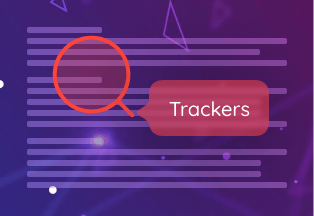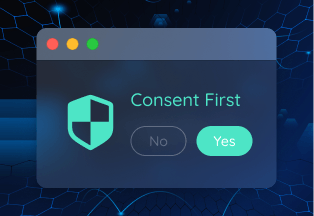DPO Radio
Understanding Compliance Risks
High vs. Low Risk Explained
Why Distinguishing Risk Levels Matters
What Defines "High Risk"
Platforms rated "high risk" introduce potential non-compliance through practices that violate core principles of GDPR, ePD, PDPL, and similar laws, such as:
Tracking Before Consent
Violation: These platforms may block cookies until consent is given but still activate other tracking technologies like beacons, pixels, or fingerprinting scripts, violating GDPR’s explicit consent requirements (Articles 4(11) and 7) and ePD 5(3).
Third-Party Data Transfers
Violation: Platforms relying on "Consent as a Service" providers often transfer IP addresses or other personal data to the third party during the consent management process itself. This data transfer occurs before consent is obtained, exposing businesses to legal risks under GDPR (e.g., Article 6) and ePD.
Lack of Transparency
Violation: Many high-risk platforms fail to clearly inform users that their IP address or other identifiers are being transmitted to third parties for consent processing, violating GDPR’s transparency requirements (Articles 12–14).
Insufficient User Control
Violation: High-risk platforms may not offer granular control over all types of tracking, forcing users to “accept all” or “reject all”, which does not comply with GDPR’s emphasis on user choice and informed decision-making.

High Risk Example
Some competitors block cookies but allow pixel trackers to fire and transmit the visitor’s IP to external Consent as a Service providers. This violates explicit consent requirements and has been highlighted in real enforcement cases.What Defines "Low Risk"
Platforms rated as "low risk" adhere strictly to GDPR, ePD 5(3), PECR, CCPA, and similar laws by enabling:
Explicit Consent Before Any Tracking
Requirement: All tracking technologies, including cookies, beacons, and pixels, can only activate after obtaining explicit user consent.
Implementation: Low-risk platforms block all tracking technologies—regardless of type—until consent is provided.
First-Party Data Processing
Requirement: The data, including IP addresses or other identifiers, must not leave the website's direct control until the user consents.
Implementation: Low-risk platforms ensure all consent management and data handling occur within the website's infrastructure, avoiding external third parties.
Granular Consent Management
Requirement: Users must have the ability to opt in or out of specific types of tracking technologies.
Implementation: Low-risk platforms provide detailed options for consent, allowing users to manage permissions transparently.

Low Risk Example
AesirX blocks all tracking technologies (cookies, beacons, pixels, etc.) or pre‑consent processing of personal information keeping data under the website owner’s control and avoiding external third-party services.Protect User Data, Build Trust, and Enable Compliance
Third-party consent platforms and systems that permit non-cookie tracking technologies are inherently high-risk. AesirX offers a transparent and compliant approach, with a fully first-party consent framework.

Why AesirX Stands Out
AesirX: For a truly compliant first-party approach.
Gain a deeper understanding of why third-party Consent as a Service solutions fall short. Read the full breakdown in our technical guide.
Consent as a Service: Why Third-Party Solutions Lead to Non-Compliance
![]() AESIRX CONSENT MANAGEMENT PLATFORM
AESIRX CONSENT MANAGEMENT PLATFORM
Seamless, Affordable Compliance Powered by AesirX
 Start your 14-day free trial today!
Start your 14-day free trial today!
Get to know AesirX Analytics and CMP, and experience all the exclusive features.
 How can we help?
How can we help?
Schedule a quick call to discuss your needs. Use our email contact form or book a meeting.
People Also Ask
Find answers to key compliance concerns. Learn how AesirX CMP minimizes risks, supports GDPR and ePD standards, and ensures privacy-first data handling.
High-risk platforms often activate tracking technologies (e.g., beacons or pixel trackers) before explicit user consent or rely on third-party CMPs, risking non-compliance. Low-risk platforms block all tracking until consent is given and process data entirely within the website's infrastructure.
The ePrivacy Directive (ePD) specifically governs the confidentiality of communications and device-level interactions, requiring explicit consent for any data access on user devices. This scope extends beyond GDPR's focus on personal data.
Terminal access refers to any interaction with a user’s device that reads, writes, or modifies data, such as setting cookies, using pixel trackers, or manipulating local storage. These actions require explicit consent unless strictly necessary for a service requested by the user.
Third-party CMPs may preload trackers or transfer data (e.g., IP addresses) before consent is obtained. This practice violates transparency requirements and explicit consent obligations under GDPR and the ePrivacy Directive.
First-party CMPs give businesses direct control over data handling, eliminating third-party risks. They prioritize transparency, data minimization, and user empowerment, ensuring strict adherence to GDPR and ePrivacy Directive standards.







